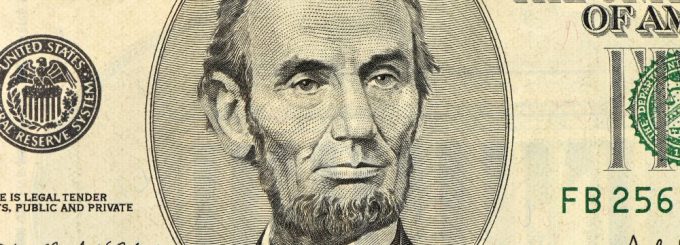Currency Spotlight: 1929 $5 First National Bank Of Kenmore

In the early 20th century, it still was common for banks in the United States to issue their own currency. One such institution was the First National Bank of Kenmore, which was headquartered in New York. One of the bills it issued was the 1929 $5 note, which has become quite rare. Below is an overview of this bill and what to look for when collecting it.
Currency Highlights
The 1929 $5 bill comes in two variants, which are Type 1 and Type 2. The first thing one notices when looking at both is that they are heavily influenced by standard American currency, and display similar visual characteristics. Only 13,982 Type 1 bills were produced, which means they are extraordinarily rare, and fetch fantastic prices when found, especially in good condition. Each Type 1 note has an image of Abraham Lincoln, and has a brown colored seal. It has the record of being the lowest denomination bill which was issued by any bank at the time. Each of the serial numbers will conclude with a letter A and will begin with a letter that is between A or F. All of these smaller notes were issued in six sheets.
Grades and Value
The 1929 $5 Type 2 note is more common than the Type 1 variant, but not by much. Only about 50,000 were issued, and the condition of the bill will play a key role in how much you’ll get for it (or pay). These bills were popular back in 1929 because $5 could then be used to by lots of goods. It has a blue colored seal, and instead of displaying an image of Abraham Lincoln it has an image of Benjamin Harrison. Like Lincoln, Harrison was also a politician and attorney who became America’s 23rd President. He served in office from 1889 until 1893. His great grandfather, Benjamin Harrison V, was one of America’s founding fathers and signatories on the Declaration of Independence.
Benjamin Harrison was a Republican who served as colonel in the Union Army during the Civil War. As president he was best known for his fiscal policies, which consisted of the McKinley Tariff, that instituted certain trade rates and more famously the Sherman Antitrust Act, which controlled competition among large enterprises. He also worked to strengthen the American Navy while fighting for voting and educational funding for Americans.
Background
The First National Bank of Kenmore opened around 1922 and remained in operation until 1935, possibly closing due to the Great Depression which was ongoing at the time. During its fourteen years in business, it printed more than $1 million worth of notes. These notes were divided into three types which differed in denomination. All the bills will look similar, but the bank name might be different. For instance, there was a bank in Erie County, which was given a 12208 charter number, so not all the bills were printed in their New York office.


